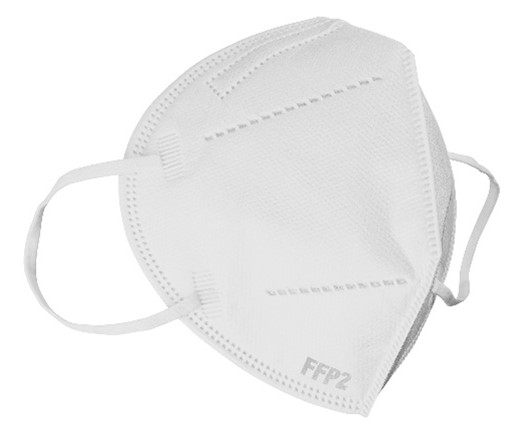Scarce Helium?
Helium prices have been rising periodically depending on availability on the world market. Just recently helium prices have increased again due to a variety of reasons including maintenance of large gas sources, but also political crises like in Ukraine. Time to look at alternatives!
What is needed for a good tracer gas?
Different gases have different characteristics which make the gas more or less suitable for leak testing. A good tracer gas should…
- be of low viscosity so that it can easily pass through a leak path
- have a low natural background in air so that the gas escaping from a leak can reliably be distinguished from surrounding air
- should not be emitted to typical industrial testing areas
- be environmentally friendly
- not be harmful to people’s health
- be affordable
- be readily available
| Leak Detection Myth |
|---|
| Sometimes it is argued that a good tracer gas needs a small molecular size. However, all atoms or molecules are in the size of a few Ångström (1 Å = ten millionth part of a millimeter). In industrial leak detection, customers are typically looking at leaks of 10-7 m to 10-5 m (0.1 to 10 μm). Hence, typical leaks are a factor of 1,000 to 100,000 times bigger than an atom. The molecular size of a gas atom does not matter for leak detection. |
So, which gases are best suited for use as a tracer gas:
| Gas | Viscosity at room temp | Environmentally friendly | Harmless to people’s health | Concentration in air |
|---|---|---|---|---|
| Air | 18.2 μPa·s | Yes | Yes | 100% |
| Carbon dioxide | 14.6 μPa·s | Yes, if taken from air | Yes, if used in small concentrations | 400… 450 ppm |
| Nitrogen | 17.5 μPa·s | Yes | Yes | 78% |
| Methane | 10.9 μPa·s | No (greenhouse gas) | flammable | None |
| Ammonium | 9.9 μPa·s | No (greenhouse gas) | Toxic + flammable | none |
| Helium | 19.7 μPa·s | Yes | Yes | 5 ppm |
| Hydrogen | 8.8 μPa·s | Yes | Flammable | 0.5 ppm |
The table illustrates that all gases have a low enough viscosity, but only helium fulfills all the criteria for a tracer gas. The second-best solution is the use of forming gas, a 5% hydrogen in 95% nitrogen mixture. Due to the fact that hydrogen is only used in 5% concentration, the smallest detectable leak rate would be higher by a factor of 20. However, the natural background is lower by a factor of 10 and together with the slightly lower viscosity of the mixture compared to pure helium, the overall sensitivity only differs by a factor of 1.7 under lab conditions.
While for some sniffer applications only helium is an option, others may benefit from switching to an alternative test gas. Whether switching is possible depends on several factors, including the leak rate to be detected, but also the environmental conditions. In general, the smaller the leak rate and the higher the risk of elevated hydrogen background, the more difficult it will be to switch.
In industrial applications, the following things must be considered:
5 Tips for Switching from Helium to Hydrogen
1. Watch out for possible hydrogen sources in advance!
Helium is an inert gas with no natural sources in industrial production, so its natural background concentration is very stable. Hydrogen, however, is a natural gas which is emitted by any type of combustion (e.g., from LNG / CNG forklifts, welding processes, cigarette smoke) and other industrial processes (like etching or electroplating but also lead battery charging). As a result, the background concentration shows significant fluctuations over time when next to any of these processes. Make sure that your leak testing area is far away from any of these processes. If possible, change the location of your test area.
2. Use containments and fresh air supply!
To further separate the testing area from the industrial environment, it is best to move your testing area into a separated area where the leak testing process is shielded from any other sources of hydrogen. Also, a fresh air supply to the testing area and a good system for venting away any gas released from the process is a good addition.
3. Use breathing masks!
Hydrogen is also contained in the human breath when exhaling. Due to the frequency of breathing, waves of exhaled hydrogen cause significant fluctuations of the hydrogen background. Also, in manual sniffing, operators tend to exhale directly onto the area to be tested. Facial masks are an effective means of smoothing the background and enabling much more reliable leak testing.


4. Adopt your leak rate limits!
Hydrogen is not used as 100% pure hydrogen as tracer gas due to its flammability, but typically a mixture of 5% hydrogen in 95% nitrogen is used (this mixture is often called forming gas as it is also used in welding processes). The leak detector can only detect the hydrogen share of the tracer gas. So, the smallest detectable leak rate is higher by a factor of 20. However, the viscosity is 13% lower, so overall the leak rate limit is 17 times higher. The trigger level needs to be adjusted by a factor of 17. Some leak detectors offer to choose forming gas from the menu so that the 5% hydrogen concentration is already taken into consideration.
5. Don’t choose a leak detector just from a data sheet!
A brochure about a hydrogen leak detector is a good start if you want to look into using hydrogen as a tracer gas. However, this does not replace a real-life trial of the leak detector in your environment. Datasheets typically do not give numbers for how well a leak detector can cope with specific requirements and environmental conditions.
For a reliable solution, get a demo leak detector and try it in your environment and in your application. INFICON offers a variety of hydrogen leak detectors with different scopes and price points. The XL3000flex leak detector can be used with either helium or hydrogen in low flow or high flow operation, offering the highest flexibility.
Contact us for assistance and for planning your onsite demo!
If you want to learn more about the use of hydrogen for leak testing, please also have a look at our on-demand webinar.